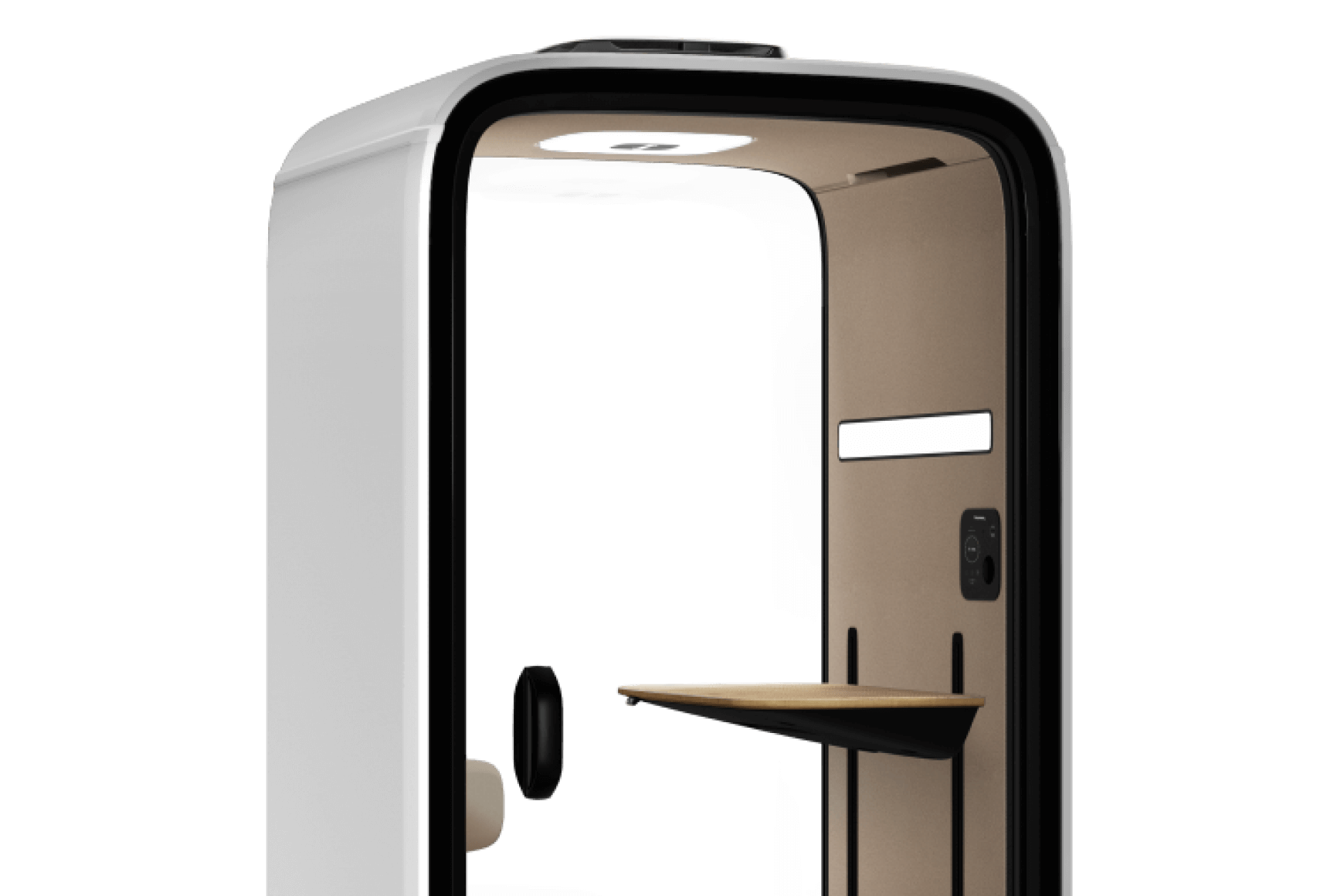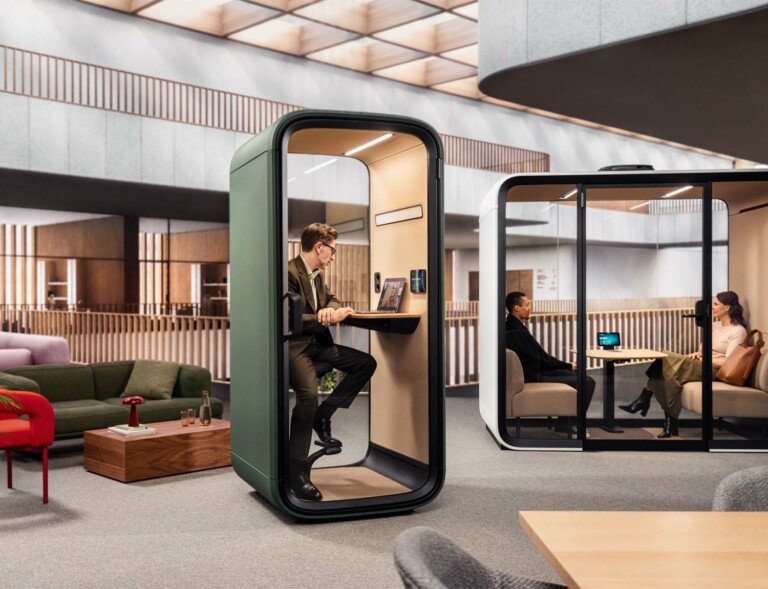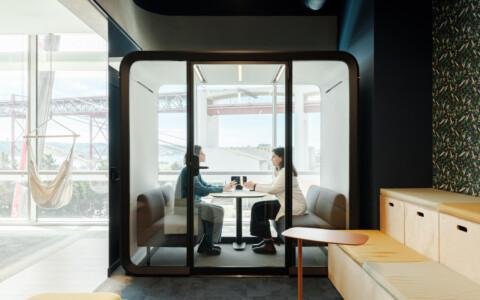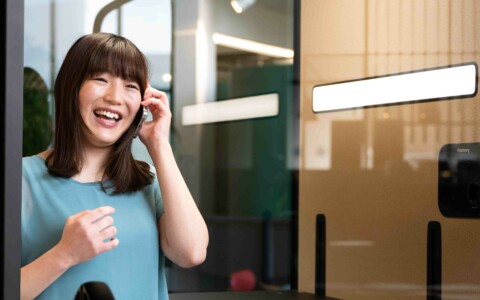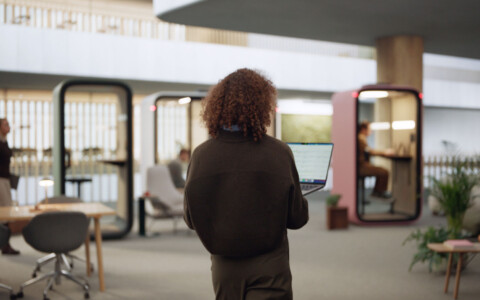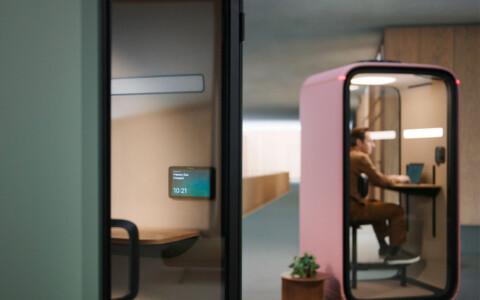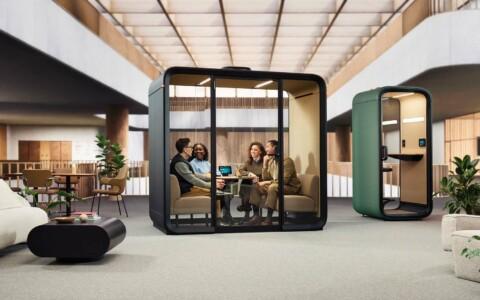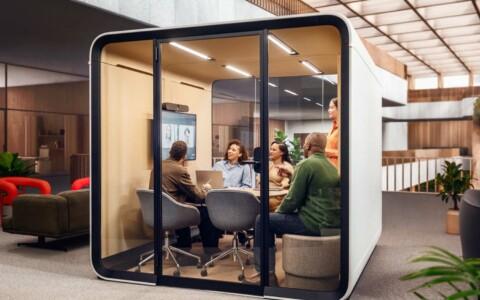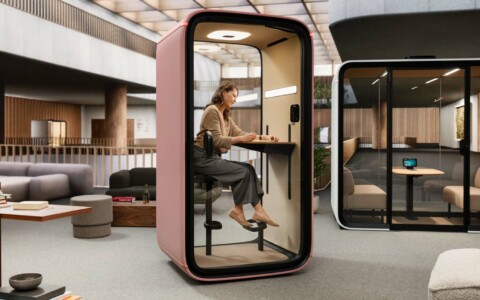Open offices encourage collaboration, yet they also bring about challenges with noise and privacy. There are good reasons to minimize office noise and its harmful effects, both for employees and the company as a whole.
Excessive noise in the workplace can reduce productivity, increase stress, and disrupt focus. Fortunately, implementing strategic acoustic designs can greatly reduce these negative impacts, enhancing employee satisfaction and boosting efficiency.
Key highlights
- Excessive office noise harms productivity and increases stress at work. Focusing on acoustic design mitigates the effects of sound pollution by focusing on the reverberation, absorption and distribution of sound.
- Open office layouts face challenges like lack of privacy, ambient noise, echoes, and external sounds. Soundproofing, sound masking, and dedicated zones for specific activities promote a healthier work environment.
- Besides the choice of acoustic materials, dividing the office into activity-based zones helps manage noise levels and supports different types of work.
Acoustic design promotes focused and productive work
A Leesman’s Research and Insights Unit survey found that many offices do not support critical work activities as effectively as home environments. One reason is the insufficient acoustic privacy and excessive noise levels at the office. Investing in acoustic design can reduce the harmful effects of office noise and promote a more peaceful, productive workplace.
Acoustic design refers to the planning and use of materials, layouts, and structures to control sound in a space. It is particularly important in office environments where employees can be exposed to great levels of distractions, both big and small.
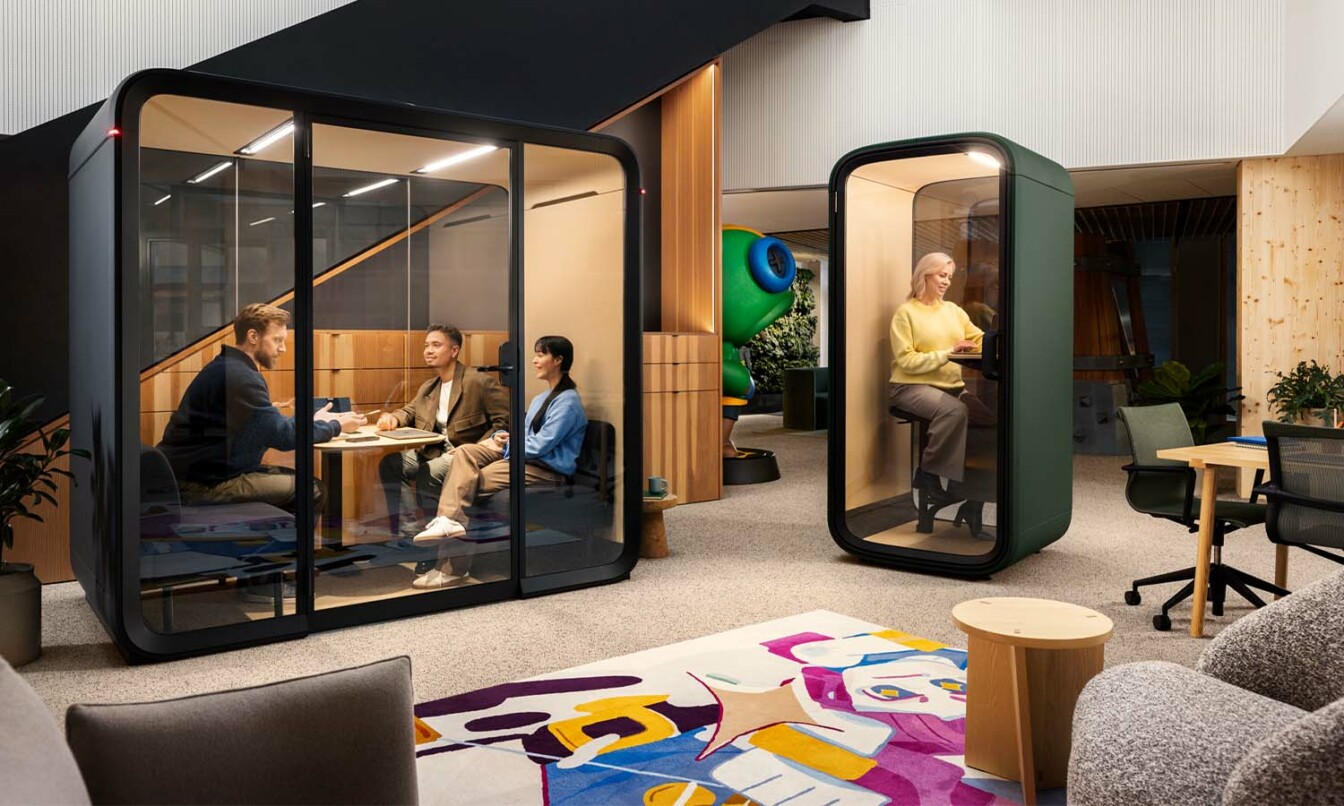
With robust acoustic design measures, companies can reduce the effects of harmful noise and control sound transmission. Key aspects of acoustic design include:
- Sound absorption: Sound-absorbing materials and furniture, such as carpets and acoustic panels, reduce echoes and sound reverberation inside the office.
- Sound insulation: Barriers and partitions between workstations and areas of the office prevent noise from traveling between them.
- Reverberation: Being mindful of adding lots of hard surfaces to the office design prevents sound waves from reflecting and spreading throughout the space.
- Sound diffusion: Ensure sound is distributed evenly to prevent it from concentrating in certain areas.
Framery smart pods and booths use materials specifically chosen for sound insulation and absorption, resulting in optimal soundproofing and acoustics inside the pods. With the embedded sound masking system, Framery pods help reduce noise distractions and further protect speech privacy throughout the office.
Common acoustic design challenges in office environments
Modern office layouts favor open designs that encourage interaction and optimize the use of limited office space. Although these kinds of open offices have their advantages, they come with their own set of acoustic challenges:
- Lack of privacy: With fewer walls, open layouts allow companies to use their office spaces more effectively. Yet, they expose employees to conversations and other office distractions. Some workplaces are missing proper spaces for confidential meetings and private phone calls.
- Ambient noise: Common office sounds like keyboards, notifications, phone calls, and machine noise contribute to a constant ambient sound. When background noise is at a low enough level (optimally around 50 decibels), it is less likely to act as a distraction. More importantly, when the source of office noise is other people, their speech should remain unintelligible.
- Echo and reverberation: High ceilings, large glass windows, and other hard surfaces can lead to a greater level of reverberation, amplifying sounds across the space. Softer, sound-absorbing materials, like acoustic wall panels, help combat excessive reverberation and echo in the office space.
- External noise: Not all sounds in the office come from within. Offices in busy city areas may also experience noise from traffic, construction, or other external sources that seep into the workspace.
Companies must rely on acoustic design to prevent unwanted sounds from disrupting focus, reducing productivity and increasing stress levels. Companies have several options for improving office acoustics and employee well-being.

Reserve enough Framery smart pods throughout the office to control noise levels and promote productive, distraction-free work. Besides their industry-leading soundproofing, Framery smart pods help to improve the acoustic design of the entire office. The Framery One Compact, Framery Four and Framery Six smart pods are equipped with sound masking technology that makes conversations and other sounds less distracting.
Explore all Framery pods
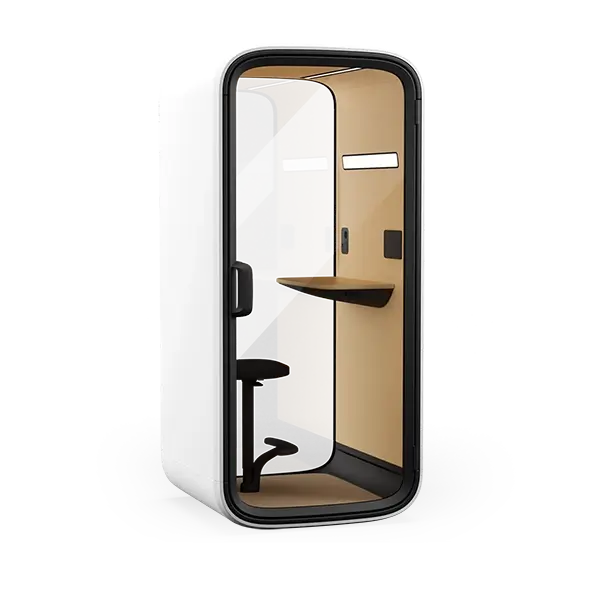
Activity-based zoning and office layouts
When employees cannot access meeting rooms for private discussions, office phone booths for taking calls, or relaxed break areas for casual conversations, the sounds of all activities in the workplace result in distracting noise levels.
To avoid this, offices should have designated areas and zones for different types of workplace activities. One way to do this division is by allocating different areas to:
- Focus areas: These areas should be as free of other distractions as possible to promote focused and productive work. In the event of a sudden phone call or ad hoc meeting, there is always an available meeting space nearby.
- Meeting spaces: These areas are confined spaces dedicated to meetings. As most meetings nowadays involve at least one remote participant, offices should have meeting spaces with the right technology.
- Social hotspots: The workplace should have designated areas for more casual interaction, such as break rooms and lounges. Here colleagues can interact more informally or chat about non-confidential work matters. This kind of area should be kept separate from distraction-free work zones.
- Transition zones: Areas such as hallways, lobbies and corridors are not used for work but can still contribute to the overall acoustic environment. Use noise-absorbing materials and dividers to prevent footsteps and chatter from bleeding into focus-intensive workspaces.
Framery smart pods are a flexible, practical solution to acoustic design challenges in large and small offices. Unlike permanent structures, such as large meeting and conference rooms, different-sized pods and booths can be positioned and repositioned to suit evolving office layouts. Freestanding, soundproof units can be placed in the midst of noisy areas owing to their soundproofing. To provide optimal sound insulation, Framery smart pods achieve a speech level reduction of 30 dB.
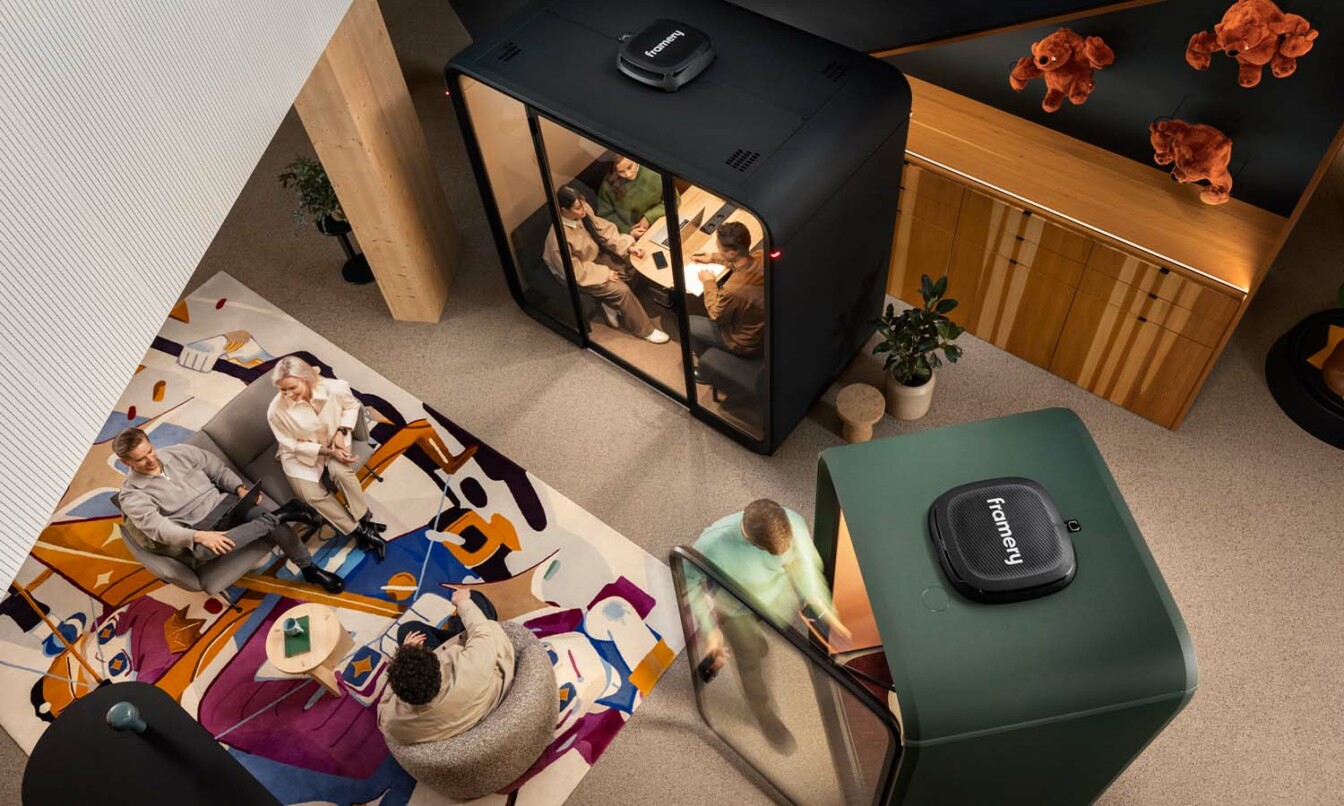
At Framery, we work closely with architects and designers to create exceptional workspaces. We help by providing everything you need to bring your vision to life, including 3D models, material documentation, and more. Visit the For Architects page and read more about how Framery helps create workspaces that work.
To read more about incorporating Framery smart pods into your office design, download our Pod Placement Guide.
FAQ about acoustic design
What is acoustic design?
Acoustic design is the strategic planning and implementation of solutions, such as office layouts and material choices, to optimize sound quality within a space, particularly in office environments. Effective acoustic design is concerned with reducing the harmful effects of noise while improving privacy in the workplace. Acoustic design focuses on how sound travels, reflects, and is absorbed to create a comfortable and productive auditory environment.
What are the benefits of office sound control?
Office sound control enhances productivity, reduces stress, and creates a more comfortable work environment. With less background noise and improved acoustic privacy, employees can focus better on tasks, hold confidential conversations, and experience fewer distractions. Sound control is especially valuable in open-office layouts, as it helps balance collaboration and the ability to concentrate.
How do material choices influence acoustic design in an office?
Material choices play a critical role in acoustic design, as different materials absorb, reflect, or transmit sound in unique ways. Soft, porous materials like carpets, acoustic panels, and furniture absorb sound. Hard surfaces, such as glass, concrete, and metal, reflect sound, which can amplify noise and cause reverberation. Incorporate sound-absorbing and reflective materials strategically to control noise levels and create a balanced acoustic environment.
Get started today
Design your own
Customize your pod and make it your own with our pod configurator.
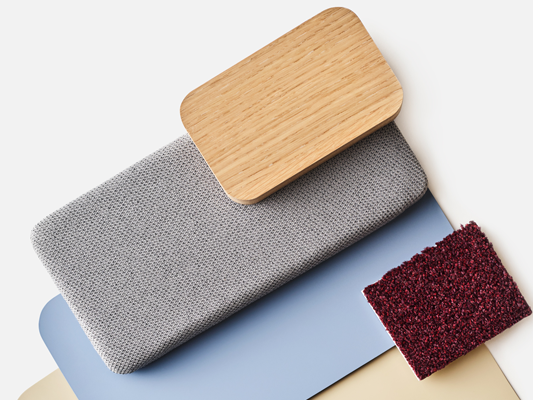
Get a quote
Find your nearest representative to hear about pricing and get a quote for your project.
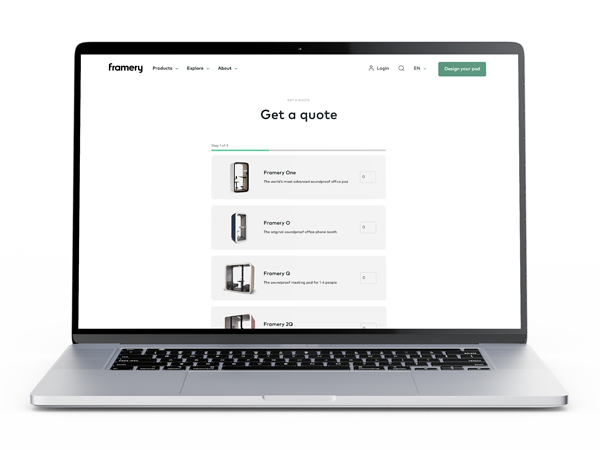
Try a pod
Visit one of our global showrooms to try any of our Framery pods for yourself.
